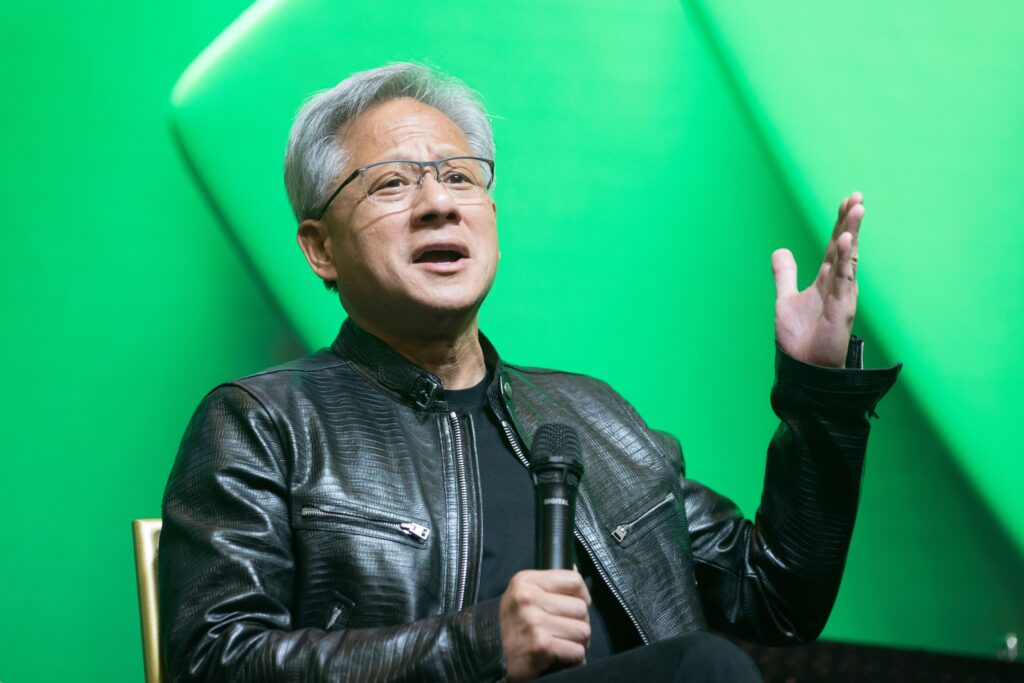TLDR;
- Nvidia CEO Jensen Huang warns that every job will be affected by AI—immediately.
- Huang says you won’t be replaced by AI, but by someone who uses it better than you.
- Learning how to prompt and interact with AI is becoming a critical skill in any profession.
- While some tech leaders predict job losses, Huang believes AI can put 30–40 million people back to work.
Nvidia CEO Jensen Huang has issued a stark warning about the accelerating impact of artificial intelligence on the global workforce.
AI Will Take Your Job
Speaking during the Milken Institute’s Global Conference this month, Huang declared, warned that AI would affect every job “immediately” noting that this technology should serve as a wake-up call to professionals in every industry.
However, according to Huang, the real threat isn’t AI itself but the people who know how to harness it better.
“You’re not going to lose your job to AI,” Huang said, “but you’re going to lose your job to someone who uses AI.”
The billionaire technologist further emphasized that the key to surviving, and thriving in the AI era lies iin embracing the tools. He advised workers to learn how to use generative AI systems like ChatGPT, Gemini Pro, or Grok, or risk being left behind in a rapidly transforming job market.
From Job Loss Fears to Job Creation Hopes
Notably, unlike other AI leaders who predict massive unemployment, Huang takes a more optimistic stance. He believes that AI can help solve global workforce shortages by enabling the return of 30 to 40 million people to the workplace. By automating mundane tasks and boosting productivity, AI could open up new avenues of employment in emerging industries.
But Huang’s vision comes with a caveat, those who fail to adapt may find themselves sidelined.
“Don’t be that person who ignores this technology and as a result, loses your job,” he urged.
Still, not all tech executives share Huang’s bullish view. Dario Amodei, CEO of AI company Anthropic, has painted a far more alarming picture, suggesting that AI could eliminate half of all entry-level white-collar jobs in under five years. While some, like billionaire investor Mark Cuban, push back by pointing to historical job transitions, the growing divide among tech leaders reflects the uncertainty that AI brings to the labor market.
Prompting: The New Power Skill
For those wondering how to begin integrating AI into their careers, Huang has a clear answer: master the art of prompting. Speaking on the “Huge Conversations” podcast earlier this year, he compared using AI to being a skilled question-asker.
“You can’t just randomly ask a bunch of questions. Asking AI to be an assistant requires expertise and artistry,” he had said.
Just as a smart question can unlock a meaningful conversation with a human, a well-crafted prompt can unlock AI’s full potential. Prompt engineering or how you structure questions or instructions for an AI tool, is quickly becoming one of the most valuable job skills of the next decade.
This advice is especially timely as a LinkedIn report projects that 70% of skills used in most jobs will change by 2030, largely due to AI. However, despite this urgency, adoption among young people remains surprisingly low. Only 11% of Americans aged 14–22 use generative AI at least once a week, according to a 2024 report by the Harvard Graduate School of Education.


